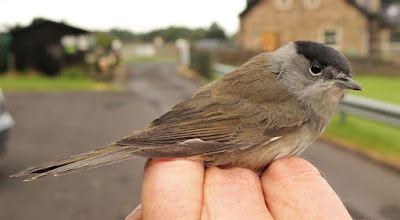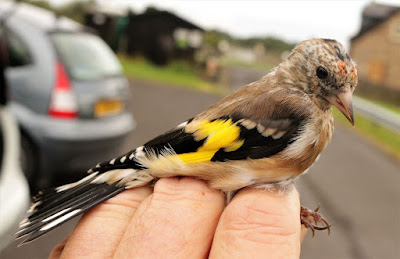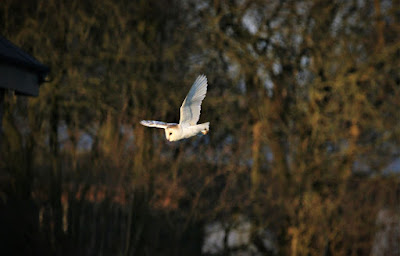Even the most enthusiastic birder needs an occasional rest day after too many bleary eyed starts so I took a few days off. Wednesday looked ok but forecasts for the rest of the week showed strengthening winds from the east so we decided on Wednesday and a less than ideal 8-12 mph.
I met up with Andy and Will at the appointed 0630 and we turned our cars to face into the breeze so as to use the ringing offices of the combined hatchbacks.
The surface of the Grizedale reservoir rippled east to west and we suspected a slow session to be on the cards whereby net rides adjacent to the private access road are open to the elements of an easterly.
Unlike the southern counties of England we have had our share of rain with no need for hose pipe bans or panic stations following two weeks of hot weather. Here in the West, 2022 has been the most average of summers devoid of any climate catastrophes. Current water levels in the reservoir are equal to if not slightly higher than August 2018 as seen in the video below. And any day now the pent up rains will begin, just as they always do.
Our early suspicions were confirmed with a catch of just 9 birds - 3 Willow Warbler, 2 Blackcap, 1 Meadow Pipit, 1 Goldcrest and horror of horrors, two Blue Tits.
There was a smidgeon of obvious and visible migration with both Swallows and House Martins on the move from north to south. About 25 Swallows fed around the trees for a short time before disappearing to the south as quickly as they arrived. Meanwhile, a gang of about 50 later arriving House Martins fed on high flying insects for around an hour before they too moved west.
Other obvious arrivals consisted of a Marsh Harrier that flew towards the west, 12/15 Pied Wagtails and 4 Grey Wagtails. Three Buzzards and 2 Ravens were more locally based, one Buzzard especially searching for a meal above the skulking and recently released Pheasant population.
There was excitement at Marton Mere, Blackpool on Tuesday evening when a “Hobby” was seen over two and three hours and then into Wednesday morning. On Wednesday morning it was correctly identified as a Red-footed Falcon and continued to give excellent views to all and sundry. A couple of days of easterly winds are enough to frustrate us ringers but can often produce infrequent and/or unusual goodies here on the West Coast.
The photo of Red-footed Falcon above is from Menorca, Spain, 2019.
The winds need to both change direction and to drop in strength for me. Here’s hoping.
Linking this weekend to Anni in Texas and Eileen's Blogspot.

















%20(1).jpg)













































.jpg)

















